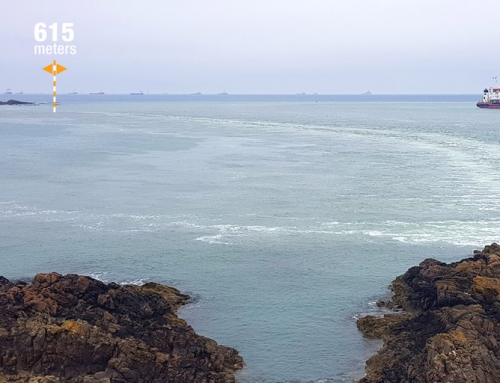The BASF Antwerp compressed air barriers are located in the northernmost part of the port of Antwerp. BASF Antwerp operates the largest chemical site in Belgium and the second largest BASF site in the world. Raw materials and manufactured products are mainly transported by ship. The highest level of security is required when loading and unloading freight. It is important to protect the ports’ water to the extent that any leaked substances are prevented from spreading further.
Compressed air barriers controlled and serviced over a total length of 2,500 m
The first compressed air barriers were laid back in 1967. At that time, mainly nitric acid, phosphoric acid, and sulfuric acid, intermediate products for the production of nitrophoska, an artificial fertilizer, were produced. If these chemicals get into the water in the event of damage, they can cause great damage. A compressed air barrier creates a horizontal flow in 2 directions. Floating substances on the water surface cannot overcome the barrier. Over the years, the plant and with it the compressed air barriers have been constantly expanded. A total of 4 individual barriers currently have a total length of approx – 2,500 m.
Inspection by group of divers successfully completed
Damage to the compressed air hoses laid on the harbor floor is mainly caused by commercial shipping and its intensive use of the port facilities. The most common causes are improper moving due to anchors being deployed within the harbor basin.
Groups of divers carry out the regular inspection of the systems from HYDROTECHNIK LÜBECK GMBH. A big advantage is that divers can react immediately if corrections or repairs are necessary. Inspection and repair can be carried out in one job. The technicians and engineers at HYDROTECHNIK LÜBECK GMBH are trained divers. They guarantee know-how and specialist knowledge even when working underwater. This year HYDROTECHNIK LÜBECK was on-site with 5 divers. Dietmar Frosch was in charge of the project. The team included Marina Rosemeyer, Thomas Bormann, Ivo Stürzebecher, and Kennedy Largavista. The work was completed on May 20, 2016. All 4 barriers are fully operational again.












